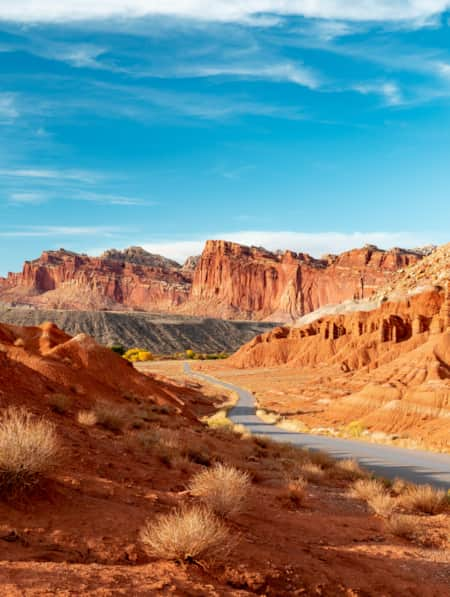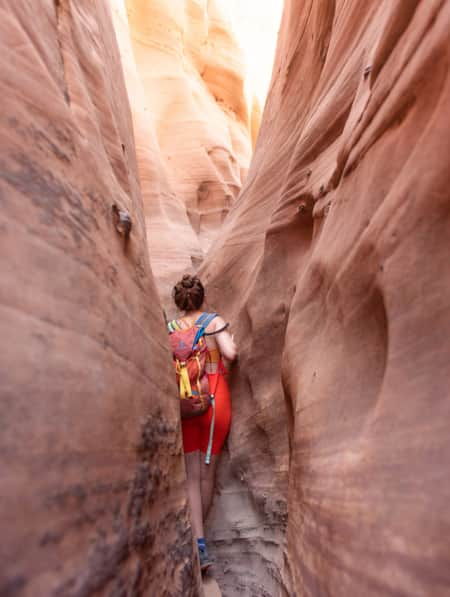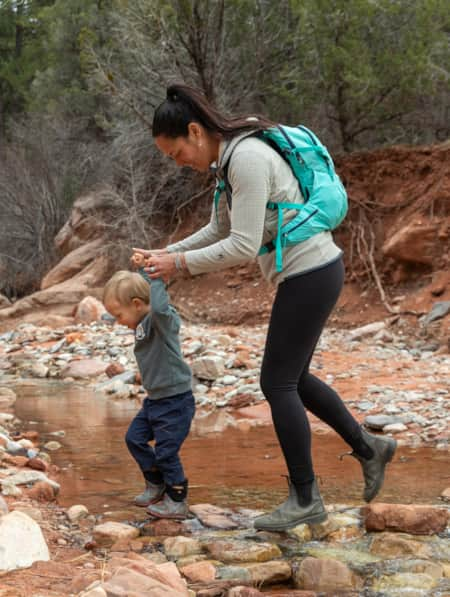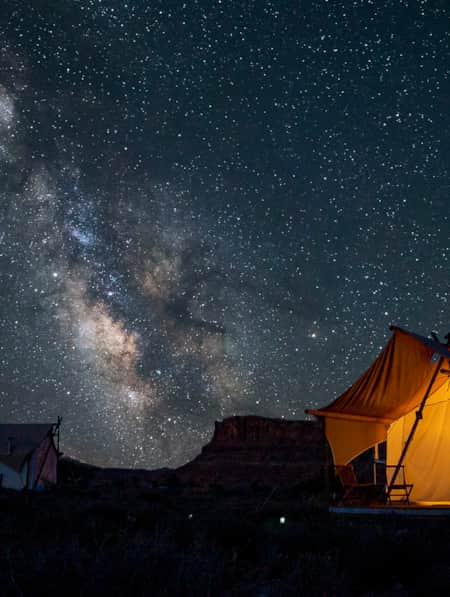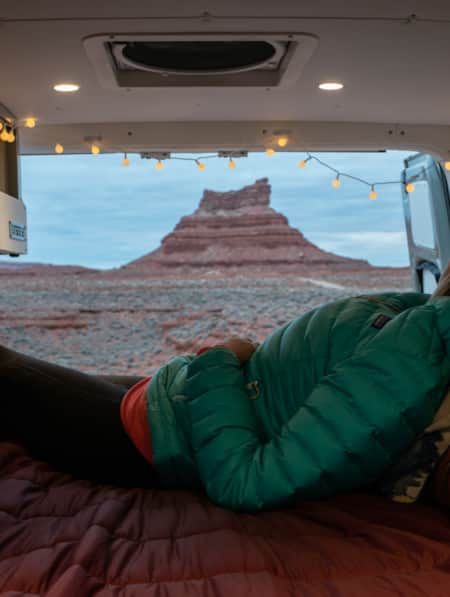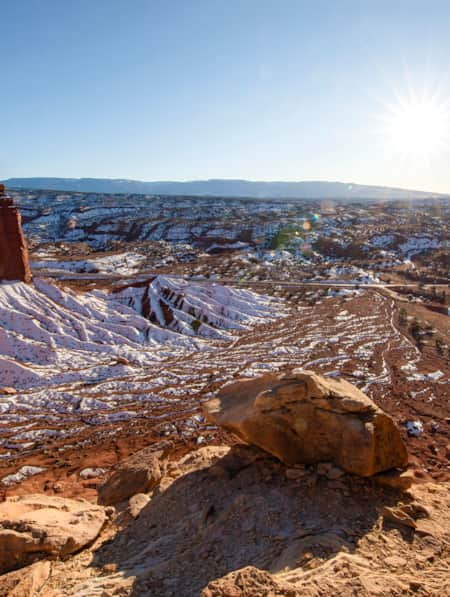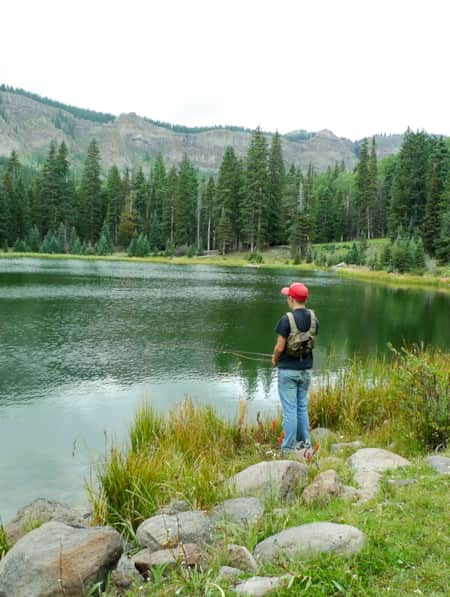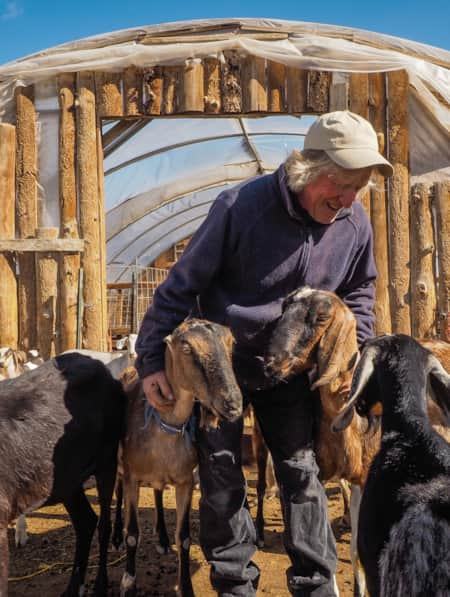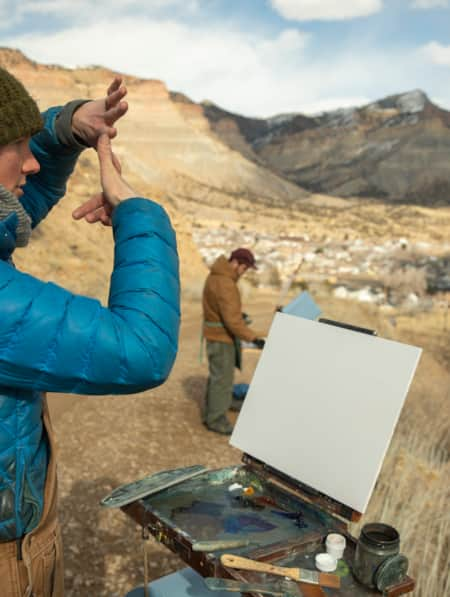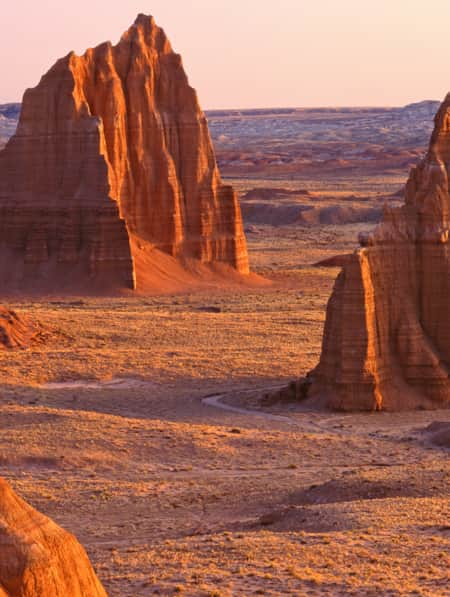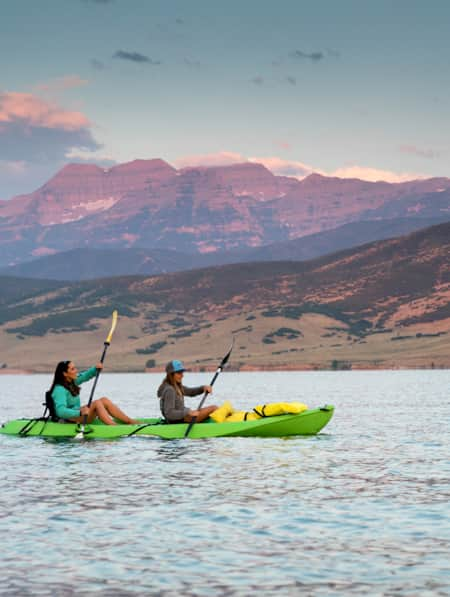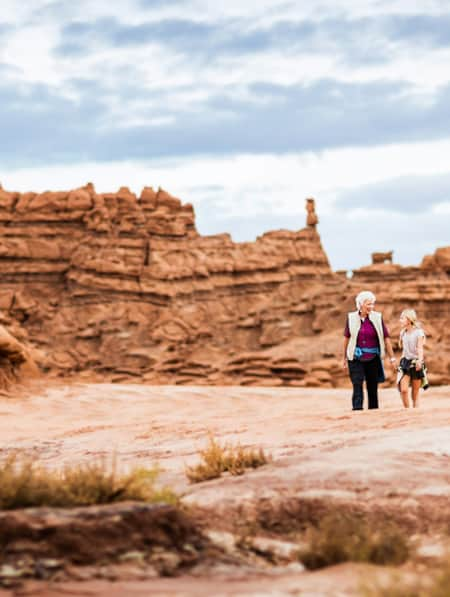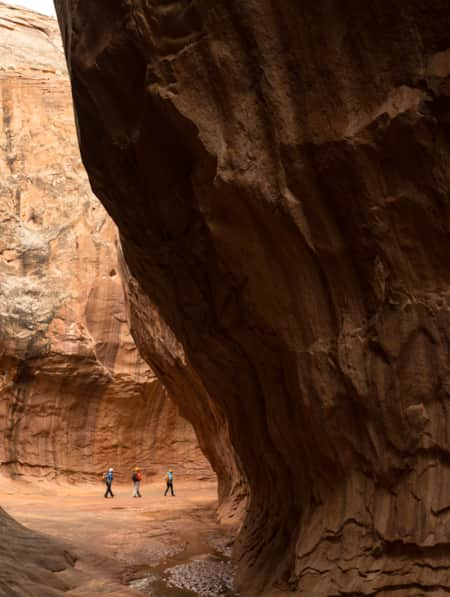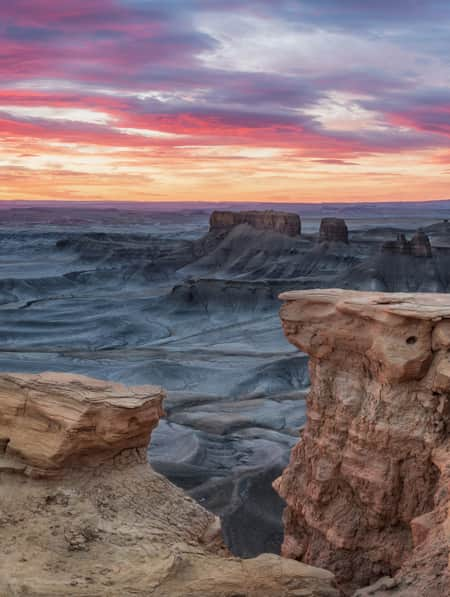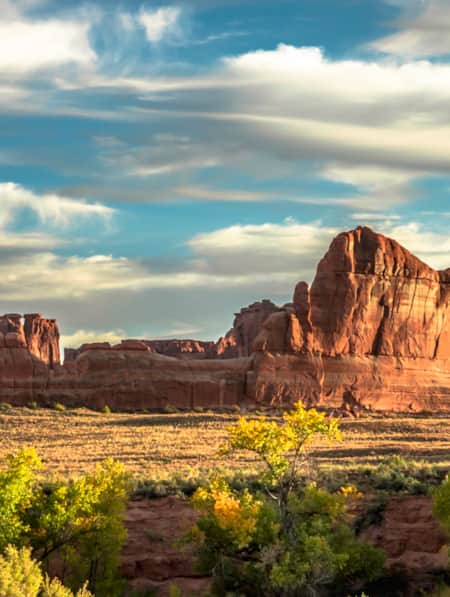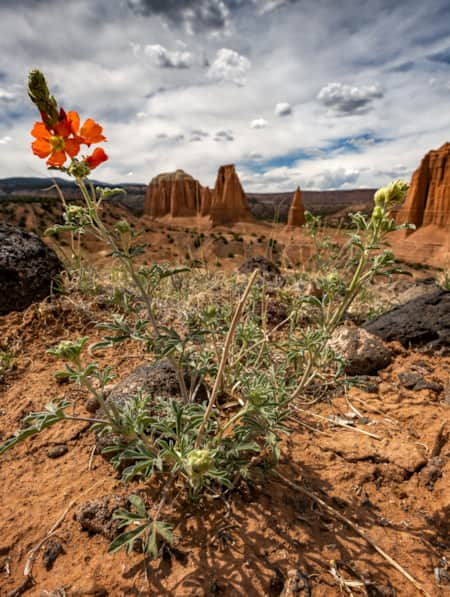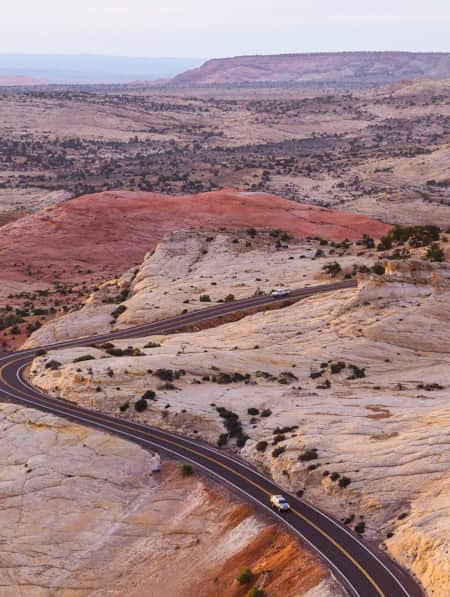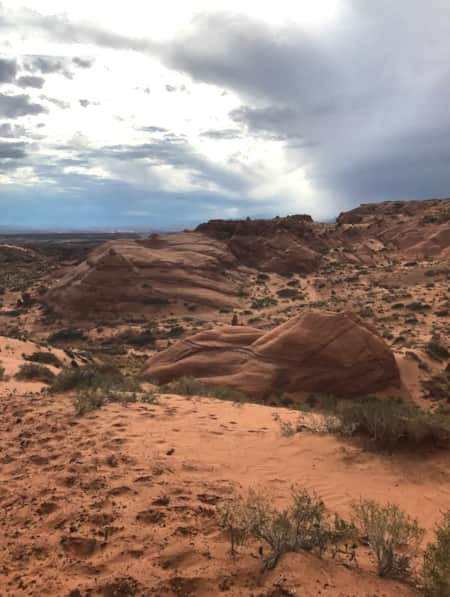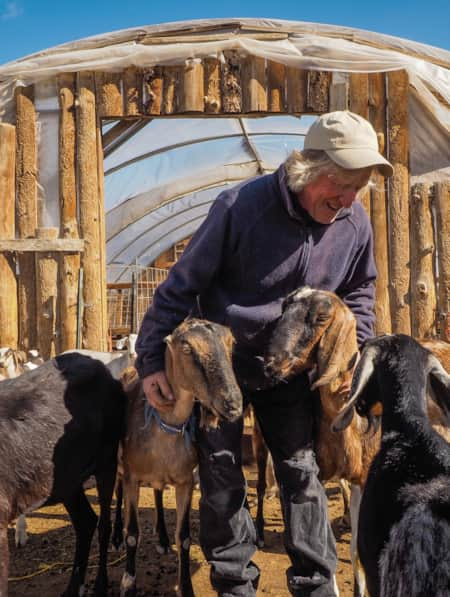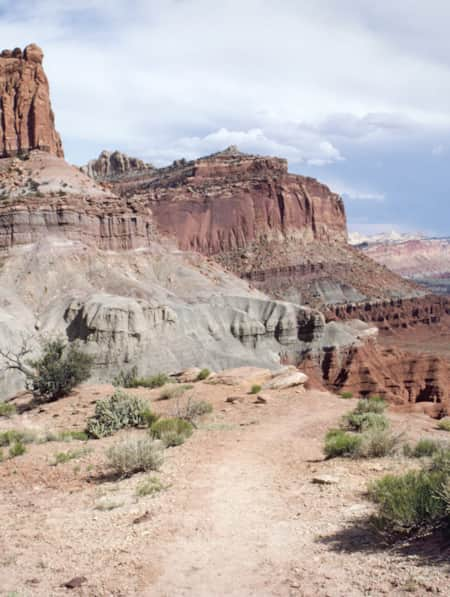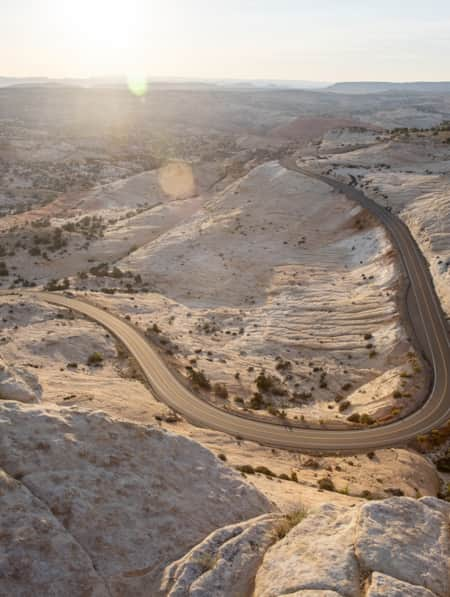- Home
- Places To Go
- Parks & Outdoors
- Capitol Reef National Park
- Capitol Reef National Park Camping
Capitol Reef National Park Camping
Capitol Reef's amazing bluffs, winding canyons and stony domes were formed by a geological event that created The Waterpocket Fold, the park’s showcase feature. It’s a 100-mile-long step of layered rock, 60 miles of which lay in the boundaries of Capitol Reef's dazzling desert ecosystem. Camping in the park harkens to an ancient time when the American Southwest was formed by the raw power of the elements.
Capitol Reef Campgrounds
-
Cathedral Valley Campground
This high desert campground has six primitive sites sitting at 7,000 feet above sea level and nestled in between juniper and pinyon forests. It should be noted that the road to Cathedral Valley is rough and high-clearance 4x4 vehicles are recommended. There is no water available, so bring in plenty to spare. No reservations are required. The no-fee campsites are first-come, first-served and each site has a picnic table and fire pit. It’s open year-round.
-
Cedar Mesa Campground
Cedar Mesa Campground has five primitive sites that are first-come, first-served. Situated at 5,500 feet, two-wheel-drive vehicles can reach the campground, but high-clearance is advised. Much like Cathedral Valley, each site has a picnic table and fire grate. There is a pit toilet, but no water is available. This no-fee campground is open year-round and is known for its access to the Red Canyon Trail.
-
Fruita Campground
The Fruita Campground is located by the Fremont River, a permanent water source that keeps the landscape green with grass and nurtures the leafy trees of old orchard groves. It offers 71 sites complete with firepits and picnic tables. RVs have access to a dump station and potable water, but no electric hookups. Campsites are reservable year-round for a nightly fee via recreation.gov.
Showing 0 of 0
"Camping in Capitol Reef National Park harkens to an ancient time when the American Southwest was formed by the raw power of the elements. "
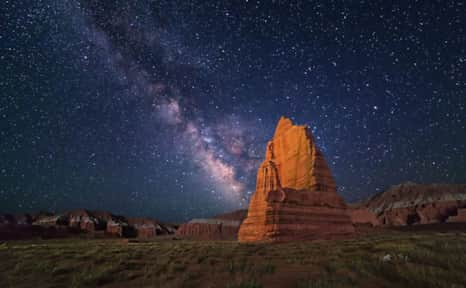
Capitol Reef is a certified International Dark Sky Park.
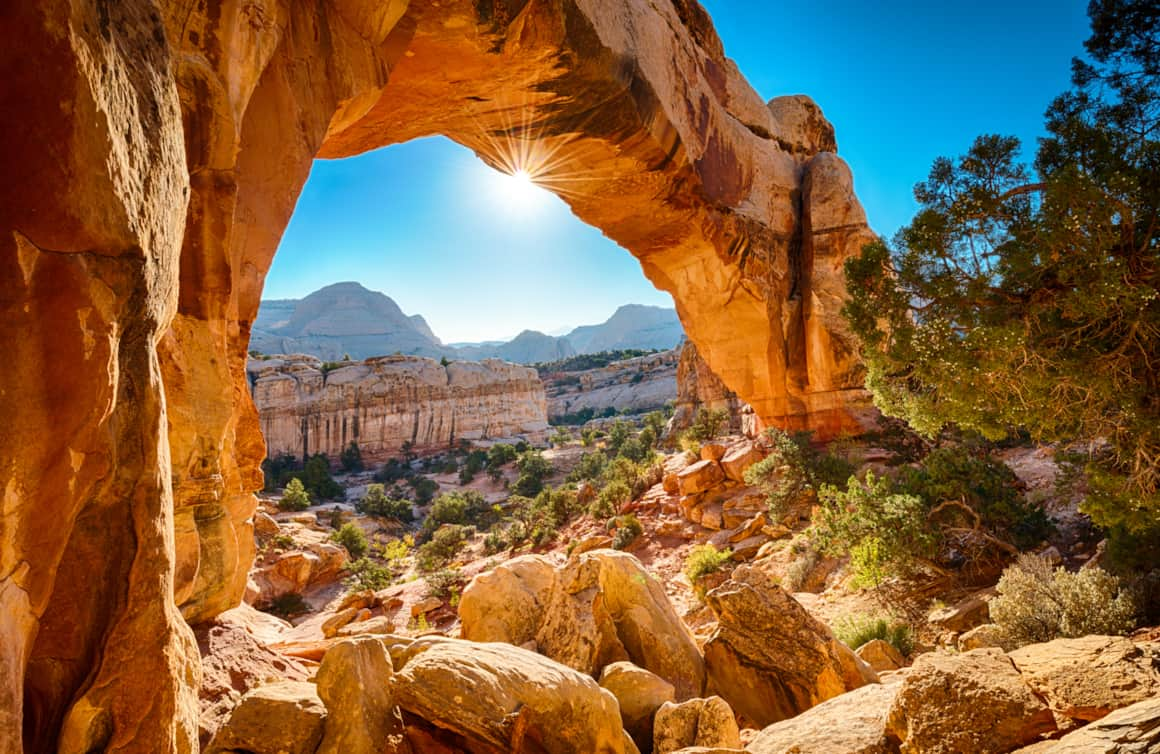
Hickman Bridge Trail in Capitol Reef National Park
Photo: Andrew Burr
Backcountry and Other Camping
Backcountry camping is allowed in Capitol Reef. A free permit must be acquired at the visitor center for all overnight backcountry visitors. The National Park Service has several recommended backpacking routes that visit slot canyons, hidden creeks and high mesas.
There are also established campgrounds in nearby Dixie and Fishlake national forests and Grand Staircase-Escalante National Monument. And dispersed camping is allowed on Bureau of Land Management (BLM) land east of the park, contact Henry Mountains Field Station for more information.
RV Camping and Glamping
RVs are allowed at the Fruita Campground, and there are several RV parks located outside of the park perimeter as well. (Read: Wheeling It: An RV Primer for Utah Family Trips)
If you prefer something more luxurious, Capitol Reef Resort in Torrey offers lush and unique glamping options just seven miles outside the park. Stay in a gorgeous cabin, cozy teepee or Conestoga wagon.
Camping Responsibly
Help shape a Utah that lasts forever
While venturing beyond the more predictable, and sometimes crowded, public campgrounds to camp in the backcountry can be a thrilling adventure — remember to travel responsibly. That's the Utah Forever way.
Leave No Trace
No matter what Utah activities you take on, remember to follow the seven principles of Leave No Trace:
- Plan ahead and prepare.
- Travel and camp on durable surfaces.
- Dispose of waste properly.
- Leave what you find.
- Minimize campfire impacts (be careful with fire).
- Respect wildlife.
- Be considerate of other visitors.
When To Visit, Pet Policies & Other Things To Know
- The high season for Capitol Reef is March through September, though the fall shoulder season can still be fairly busy.
- Many areas of Capitol Reef, including the primitive campgrounds, lack water sources. Bring plenty for all your needs and be sure to purify any water you use in the backcountry.
- Leashed pets are allowed on 6-foot leashes in developed areas of the park but not in the backcountry. For more detailed pet regulations, visit the National Park Service website.
- Utah’s National Parks see millions of travelers each year. As you plan your next trip to Capitol Reef, consider ways to support its basecamp communities and preserve the natural beauty of the park. That's the Utah Forever way.
Discover More
-

10 Top Stops Along the National Pioneer Mormon Heritage Area
Written By Matcha
5 minute read
Here are 10 of the best stops along Utah's Mormon Pioneer National Heritage Area’s backroads and byways. Explore rich Mormon historic sites, awe-inspiring canyons and mountains and unforgettable outdoor adventures.
-

15 Non-Technical Slot Canyons
Written By Whitney Childers
7 minute read
You don’t have to be Spider-Man to explore some of the best slot canyons Utah has to offer. You just need to be ready for an adventure in tight spaces with huge photographic rewards
-

5 Expert Tips to Prepare for Your Utah National Parks Adventure
Written By Visit Utah
3 minute read
If you’re planning to visit Utah national parks for a hike, learn important tips to maximize your experience and keep you and your family safe.
-

5 Places You Can Try Glamorous Camping in Utah
Written By Melissa McGibbon
Experience the fun and adventure of glamping — camping with a side of luxury.
-

7 Utah Artisan Cheeses to Try Now
Written By Darby Doyle
7 minute read
Taste delicious hand-crafted cheese from Utah dairies at farmers markets, restaurants and specialty shops. Visit Utah and find your favorite artisanal cheese.
-

A Van Lifer’s Guide to Responsible Travel in Southern Utah
Written By Kristen Bor
2 minute read
When Utah’s dirt roads are calling you, it’s time to plan your van life road trip. Here’s what you need to know to travel safely, support Utah’s rural communities, and help preserve the delicate desert landscapes.
-

A Winter’s Desert: Visiting Southern Utah in the Slow Months
Written By Brinley Froelich
7 minute read
Experiencing the peace of canyon country in the winter is an attraction of its own.
-

Alpine Fishing Above the Red Rock Landscapes of Southern Utah
Written By Visit Utah
2 minute read
Sitting just outside of Capitol Reef National Park, this 11,000-foot peak offers views of the surrounding red canyons and desert-like region. In contrast, Boulder Mountain is heavily forested and home to more than 80 lakes, ponds, and reservoirs. With an average rainfall multiple inches more than the lower regions, the area makes for some surprisingly good fishing.
-

An Insider’s Guide to Torrey
Written By Melissa Fields
4 minute read
Look no further than Capitol Reef National Park and nearby Torrey for lesser-traveled red-rock hikes, plenty of lodging options, satisfying dining and night sky as our ancestors knew it.
-

Artisan Cheese in Red Rock Country
Written By Darby Doyle
8 minute read
Two decades ago, Randy Ramsley traded his Dockers-and-tie city job for a 50 acre plot of land that he called a “Garden of Weedin” and the dream of establishing a sustainable farmstead. Now travelers from all over the globe know the small market and counter-service restaurant at Mesa Farm as a refreshing “must-do” respite seemingly plunked in the middle of nowhere on Highway 24 east of Capitol Reef National Park.
-

Gravity and Water: Mark Making in a Winter’s Desert with Anne Kaferle
Written By Brinley Froelich
3 minute read
Finding Helper at a time when she “needed it the most,” landscape artist Anne Kaferle has put down roots in Utah, thanks to plein-air painting and the healing power of time alone in the landscape.
-

Hiking the Desert in Capitol Reef National Park
Written By Visit Utah
-

How to Slow Travel in Utah
Written By Elainna Ciaramella
Avoid the mad scramble and consider slow travel as a better approach to your Utah trip.
-

Meet the Women Leading Utah's Food and Beverage Renaissance
Written By Darby Doyle
When it comes to food and beverage in Utah, there are key influencers who have been the proponents of change, growth, and the role of women in Utah’s food scene.
-

Mesa Farm Market
Best local shops and healthy eats near Moab and Capitol Reef. Try the goat cheese!
-

Moonscapes, Marscapes and More
Written By Matcha
If you want to know what Mars looks like — then the dramatic terrain of Capitol Reef National Park and the surrounding lands are a good place to start.
-

Permit of Solitude in Robbers Roost
Written By Visit Utah
6 minute read
Local guide Christopher Hagedorn leads a group through Robbers Roost in Southern Utah, where wind, water and time has left a primitive maze of canyons.
-

Searching for Dinosaur Bones in Capitol Reef Country
Written By Matcha
4 minute read
The Hanksville-Burpee Dinosaur Quarry dates back to the Jurassic Period and is approximately 150 feet wide by 600 feet long. Hundreds of dinosaur bones have been discovered here, including those of the Stegosaurus, Brontosaurus and Brachiosaurus.
-

See the Fall Leaves Near Utah's National Parks
Written By Visit Utah
Sure, any of Utah’s Mighty 5 national parks are spectacular year round — covered in snow, peppered with spring wildflowers, and baked in sunshine. But find them exponentially special when the changing fall leaves are in juxtaposition to the immaculate red rock cliffs.
-

Serenity Found in Torrey and Capitol Reef’s Cathedral Valley District
Written By Melissa Fields
5 minute read
Taking Southern Utah’s remote, less-traveled path in Capitol Reef's Cathedral Valley District to nurture your body, mind and spirit.
-

The All-American Road: Scenic Byway 12
Written By Visit Utah
4 minute read
This is 122.863 miles (to be exact) of pure driving bliss. Welcome to Utah’s Scenic Byway 12, a designated All-American Road.
-

The Return to Robbers Roost
Written By Lindy Blanchette
10 minute read
Are you intrigued by the old American West legend involving Robbers Roost? Want to find an alleged hideout of the infamous Butch Cassidy and Gang? Explore Utah.
-

Utah’s Unexpected Pit Stops
Written By Melissa McGibbon
5 minute read
Here are 11 mini-adventures to check off your list next time you’re road-tripping through Utah.
-

Walking Off the Ledge Into Capitol Reef
Written By Paula Colman
6 minute read
Capitol Reef is breathtaking, but as you stare across the ledge you realize that some of the best scenery is only accessible by dropping in, 20, 50, sometimes 100 feet or more.
-

Winter Road Trip: Where to Stay, Hike and Eat When Traveling from Capitol Reef to Bryce Canyon
Written By Jeremy Pugh
Need winter break ideas? Take a road trip from Capitol Reef to Bryce Canyon and enjoy the best of Utah landscapes during its quiet season.
